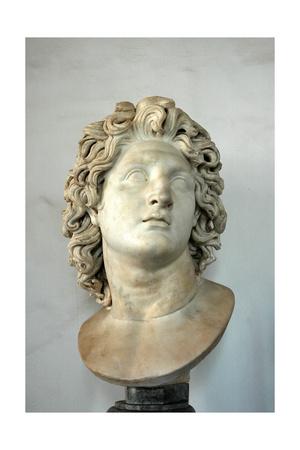

Years of tensions between Mark Antony and Octavian came to a head in 32 BCE when Octavian instigated the Roman Senate to declare war on Cleopatra. Later Years & the Final War of the Roman Republic Iotape spent the next few years of her life in Alexandria, although the young age of both parties meant that the planned marriage would not occur for years to come. Antony's new alliance with Artavasdes I was further solidified when Alexander Helios was engaged to Iotape, the 9-year-old daughter of Artavasdes I of Media in 34 BCE. Mark Antony found a new ally against the Parthians in Artavasdes II's rival, Artavasdes I of Media Atropatene (r. However, this coronation was not much more than a formality as Alexander Helios was only about six years old at the time and the kingdoms of Parthia and Media were still outside of his parents grasp in any case. Alexander Helios himself appeared in the costume of an Iranian prince, signifying his new dominion. Alexander Helios was proclaimed King of Kings like his brother Caesarion and was granted territories which included Armenia, Media, and Parthia. During this elaborate ceremony, Antony formally bestowed additional territories on Cleopatra and her children, redrawing the political map of the Near East. The conquest of Armenia was celebrated during the Donations of Alexandria in 34 BCE. The Armenian king's caution was ultimately not enough to safeguard him, however, as Mark Antony invaded and subdued Armenia that year, taking Artavasdes II and his family as hostages. However, the Armenian king grew suspicious of the offer and refused the engagement. In an attempt to lure Artavasdes II into negotiations, Antony permitted his lieutenant Quintus Dellius to offer Alexander Helios - then about six years old - in marriage to Artavasdes II's daughter. These events made it necessary for Antony to turn his attention towards Armenia in 35 BCE, with the intent to stage a future invasion of Parthia from there. Despite having a numerical advantage over the Parthians, the majority of the Roman forces were killed or captured at the Battle of Carrhae (53 BCE), including Crassus and his son Publius. Tensions between the Roman Republic and the Parthian Empire had come to a head earlier when Marcus Licinius Crassus launched a doomed invasion of Parthia in 53 BCE.

The actual purpose of Antony and Cleopatra's meeting in 37 BCE was to allow Antony and Cleopatra to renew their alliance and make preparations for Antony's planned invasion of the Parthian Empire. Cleopatra Selene II's nickname doubled as a reference to their ancestor Cleopatra Selene I of Syria. Alexander's twin sister was given the nickname Selene, Greek for "Moon", and the name of the mythological Titan's twin sister. The name Helios is Greek for “Sun” and was also the name of the Titan who personified the Sun. It is likely that Alexander and his younger sister Cleopatra received their surnames, Helios and Selene respectively, from their father around 37 BCE. As a result of Mark Antony's extended absence, the first time that Alexander Helios and Cleopatra Selene met their father was in 37 BCE when Antony summoned Cleopatra to meet him in Antioch.


 0 kommentar(er)
0 kommentar(er)
